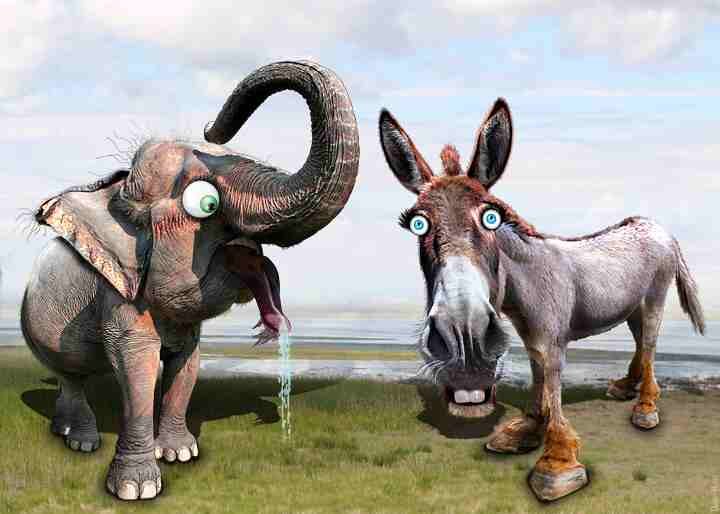In American political culture, few symbols are as well-recognized as the donkey for Democrats and the elephant for Republicans. These animals have become inseparable from the identity and perception of America’s two main political parties. But why do these parties have such distinct and seemingly odd symbols, and what do they mean?
The Origin of the Donkey for Democrats
The association between the Democratic Party and the donkey dates back to the 1828 presidential campaign of Andrew Jackson, the first Democrat to win the presidency. His opponents mocked him by calling him a “jackass” because of his populist beliefs and stubbornness. Rather than taking offense, Jackson embraced the label, finding it an apt symbol of determination and resilience.
In 1870, Thomas Nast, a prominent political cartoonist, solidified the donkey as a symbol for the Democratic Party through his cartoons in Harper’s Weekly. Nast used the donkey to represent the Democrats’ opposition to the Republican agenda, particularly in the post-Civil War era. Since then, the donkey has been widely accepted as the party’s emblem. The donkey’s association with Democrats suggests qualities like strength, perseverance, and a commitment to the common people—qualities that the party has often sought to emphasize.
The Elephant as the Symbol of the Republicans
Similarly, the elephant’s association with the Republican Party can be traced to Thomas Nast, who, just three years after popularizing the donkey, created a cartoon featuring an elephant to represent Republican voters. In an 1874 cartoon titled “The Third-Term Panic,” Nast used the elephant to depict the Republican vote in reaction to a rumor that Ulysses S. Grant might run for a third term.
The elephant quickly became the Republican symbol, with its attributes of strength, dignity, and reliability. Republicans saw these qualities as representing their ideals of stability, order, and a strong approach to governance. In the years since, the elephant has come to symbolize conservative values, fiscal responsibility, and strength, aligning with the party’s ethos.
The Enduring Legacy of These Symbols
Though they began as satirical icons, the donkey and elephant have taken on lives of their own in American political discourse. Democrats have embraced the donkey as a symbol of their commitment to the working class, civil rights, and progressive reform. Meanwhile, Republicans see the elephant as emblematic of their principles, often focusing on tradition, national defense, and limited government intervention.
In a polarized political environment, these symbols serve as a shorthand for complex party identities and ideologies. The simplicity of these images has allowed them to persist for over a century, reinforcing party loyalty and making American political discourse uniquely recognizable.
In conclusion, the donkey and the elephant are more than just animals in American politics. They are symbols that reflect historical origins, party ideals, and the power of imagery in shaping public perceptions. The distinct personalities of these symbols offer a colorful, lasting representation of America’s two-party system, helping citizens quickly identify and connect with the values and principles each party represents.








